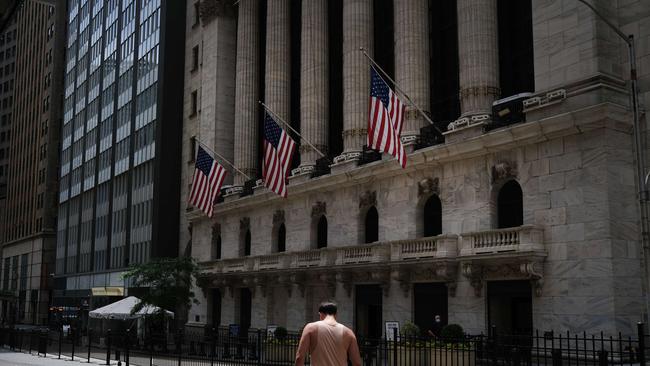The safe investment that will soon yield almost 10pc
The March surge in the consumer-price index is the latest boon to buyers of US savings bonds that are adjusted for inflation, known as I Bonds.

There’s no such thing as a free lunch in finance. Except maybe this: The interest rate on inflation-adjusted US savings bonds will approach 10 per cent beginning in May.
US Treasury Series I Bonds, or I Bonds, will offer annual interest payments of 9.6 per cent, based on the bond’s latest inflation rate calculation, which is tied to March’s consumer-price index. Prices rose by 8.5 per cent year over year in March, the fastest pace since December 1981, according to the Bureau of Labor Statistics.
The interest is compounded every six months and reassessed in May and November each year. The bonds haven’t always been hot sellers, but that has changed with the surge in US inflation gauges.
Over the past six months, nearly $US11bn ($A14.74bn) in I Bonds have been issued, compared with around $US1.2bn during the same period in 2020 and 2021, according to Treasury Department records.
“That’s been a hot topic,” said Kathy Jones, chief fixed-income strategist at Charles Schwab.
“The I Bond has been very popular because of the yield. For six months at least, you’ve got a pretty fat yield there.”
I Bonds are guaranteed by the federal government. The bonds pay a fixed rate that is set by the Treasury, plus an inflation-adjusted rate that is determined by the change in CPI over the past six months. Thanks to the upward trajectory of CPI, I Bonds have become a top yielding US asset, even though they carry virtually no risk of principal loss.
They also offer tax benefits. Holders can choose to defer declaring I Bond interest until maturity or redemption. That income may be tax-exempt for lower- and middle-income families that use the bond to pay for college tuition.
For investors seeking a safe and high-yielding investment, there is “nothing nearly as good as the I Bond,” said Joshua Rauh, a senior fellow at Stanford’s Hoover Institution.
The bonds could pay more if Treasury Secretary Janet Yellen chooses to raise the fixed interest rate, which has held at 0 per cent since May 2020.
Even without a bump from Ms Yellen, the rate will be more than 150 times the annual interest paid by the average US bank on a savings account and more than triple the current yield on a 30-year US Treasury bond. It’s also almost triple the 3.54 per cent the I Bonds paid just one year ago.
There are a few strings attached. I Bonds can’t be traded like Treasurys and they are only available through the US Treasury Department’s website, TreasuryDirect.gov. They can’t be redeemed for at least one year and I Bonds redeemed after less than five years will be penalised the last three months of earned interest. There are special provisions for those affected by a disaster.
Since they aren’t purchased through banks or brokerages and don’t pay commissions or expenses, the assets have drawn limited attention from financial advisers. As of March 31, there was a total of $US57.2bn of I Bonds outstanding, which amounts to less than 0.25 per cent of all US debt held by the public, according to the Treasury Department.
Mr Rauh is trying to change that. He wrote a WSJ op-ed in February with Stanford visiting economics fellow and former Federal Reserve Board member Kevin Warsh urging the administration to raise the annual cap on I Bonds from $US10,000 to $US100,000 per person. (The current cap rises to $US15,000 for individuals who choose to put $US5,000 of their tax return in paper bonds.)
Representative Alex X. Mooney said last month that he was introducing a bill that would ask Treasury to assess the feasibility and impact of raising the I Bond cap.
I Bonds were introduced in 1998 by former Vice President Al Gore and Treasury Secretary Robert Rubin as a way to help Americans save for investments like college and retirement and to “ensure that those savings will never be undercut by future inflation,” Mr Gore said at the time.
Treasury is working on an overhaul of TreasuryDirect.gov to make it more user friendly, according to a senior spokesman, noting that the department is “currently in the process of developing an updated, modern replacement for the current TreasuryDirect system.”
The Wall Street Journal


